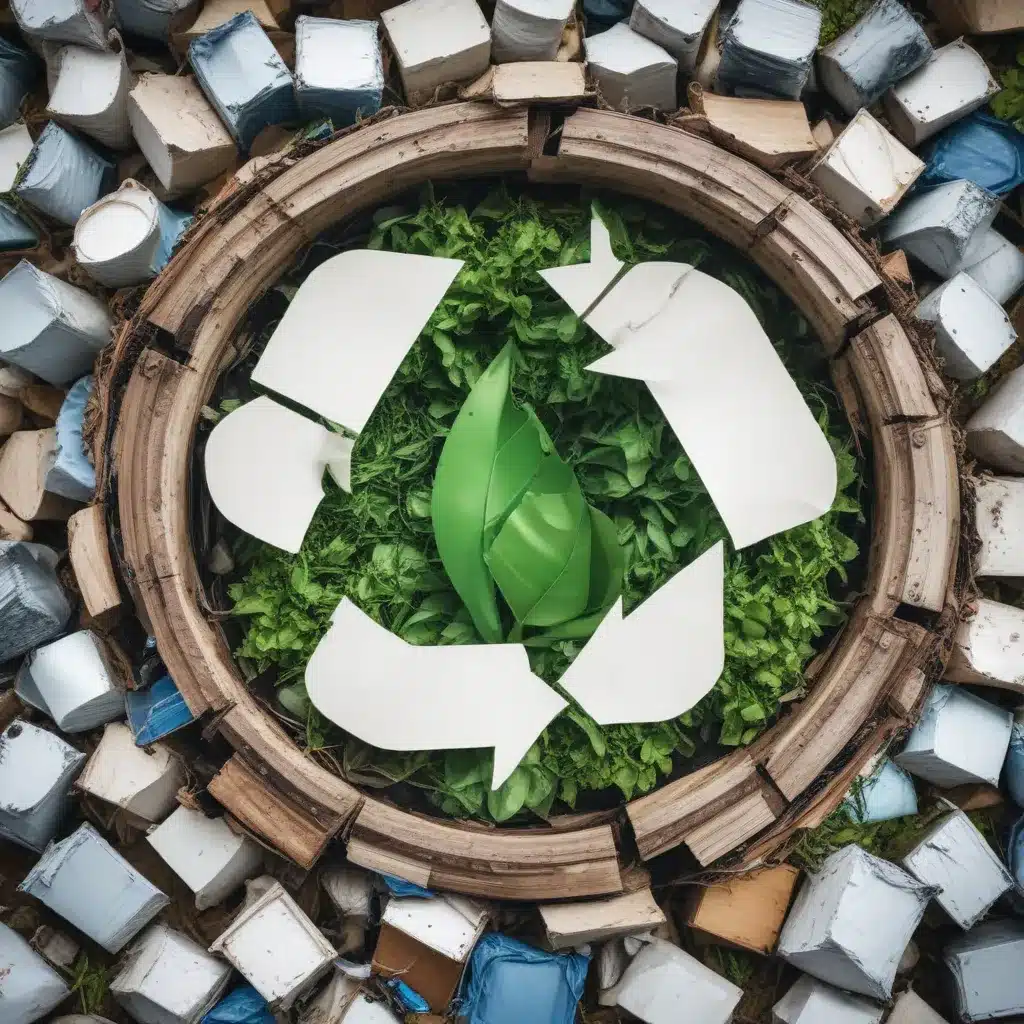
The global shift towards sustainability has brought the concept of the circular economy to the forefront. Diverging from the traditional linear model of “take, make, dispose,” the circular economy presents a transformative approach that seeks to redefine production, consumption, and waste management. At the heart of this paradigm shift lies the integration of renewable energy as a key enabler, playing a crucial role in addressing the environmental challenges we face.
The Concept of Circular Economy
The circular economy is predicated on three fundamental principles: reduce, reuse, and recycle. This holistic approach aims to keep products, materials, and resources in use for as long as possible, minimizing waste and pollution. By designing products for durability, repairability, and recyclability, the circular economy reimagines the lifecycle of goods, moving away from the linear “cradle-to-grave” model.
Renewable energy is a cornerstone of the circular economy, as it enables the transition from a fossil fuel-based system to one that is sustainable and regenerative by design. The integration of renewable sources, such as solar, wind, and hydropower, reduces the reliance on finite resources and mitigates the environmental impact associated with energy production.
Benefits of Circular Economy
The adoption of circular economy principles offers a myriad of benefits, spanning environmental, economic, and social dimensions. By reducing waste and promoting the efficient use of resources, the circular economy contributes to climate change mitigation, resource conservation, and the preservation of natural ecosystems. Additionally, it fosters job creation, economic growth, and community development, positioning it as a strategic approach to achieving long-term sustainability.
Challenges in Implementing Circular Economy
Despite the clear advantages, transitioning to a circular economy presents several challenges that must be addressed. Systemic changes in production processes, business models, and consumer behavior require collaboration across various sectors and levels of government. The design of products for durability, repairability, and recyclability also poses a significant hurdle, necessitating a paradigm shift in product design and manufacturing.
Furthermore, the expansion and improvement of recycling and refurbishing infrastructure are crucial for the widespread implementation of circular practices. Overcoming entrenched consumer attitudes and preferences towards new products versus reused or refurbished ones is another obstacle that must be navigated.
Renewable Energy and Waste Management
The integration of renewable energy is a crucial component in the circular economy, particularly in the realm of waste management. Renewable energy sources can play a pivotal role in reducing the environmental impact of waste disposal and processing.
Role of Renewable Energy in Waste Reduction
Renewable energy can contribute to waste reduction through innovative technologies and processes. For instance, solar-powered compactors and wind-powered waste collection vehicles can significantly reduce the energy consumption and emissions associated with traditional waste management operations.
Integration of Renewable Energy in Waste Facilities
Renewable energy can be utilized within waste management facilities to power various processes, such as sorting, recycling, and waste-to-energy conversion. The installation of solar panels or wind turbines on-site can provide a reliable and sustainable source of energy, reducing the carbon footprint of these operations.
Innovative Waste-to-Energy Technologies
Advancements in waste-to-energy technologies, such as anaerobic digestion and gasification, have enabled the transformation of organic waste into renewable biogas and biofuels. These innovations not only divert waste from landfills but also contribute to the circular economy by converting waste into valuable energy resources.
Environmental Impacts of Circular Economy
The circular economy, with its integration of renewable energy, has a profound impact on environmental sustainability. By minimizing waste and pollution, the circular model plays a vital role in greenhouse gas emission reduction, resource conservation, and the preservation of natural ecosystems.
Greenhouse Gas Emission Reduction
The shift from a linear to a circular economy, coupled with the adoption of renewable energy, can significantly reduce greenhouse gas emissions. This is achieved through the decreased energy consumption associated with recycling and reuse, as well as the avoidance of emissions from waste disposal and virgin resource extraction.
Resource Conservation and Efficiency
The circular economy principles of reducing, reusing, and recycling promote the efficient use of resources, thereby conserving natural resources and minimizing the environmental impact of extraction and processing activities. This approach helps to preserve biodiversity and combat resource depletion.
Sustainable Waste Disposal Practices
The integration of renewable energy in waste management facilities enables more sustainable waste disposal practices. This includes the conversion of waste into energy, the diversion of materials from landfills, and the proper treatment and disposal of hazardous waste, all while minimizing the environmental footprint.
Economic Implications of Circular Economy
The implementation of circular economy principles, supported by renewable energy, offers a range of economic benefits that extend beyond environmental sustainability.
Cost Savings and Increased Profitability
The efficient use of resources and the reduction of waste can result in significant cost savings for businesses, as they minimize the expenses associated with raw material procurement, energy consumption, and waste disposal.
Job Creation and Economic Growth
The transition to a circular economy has the potential to create a significant number of new jobs, particularly in the fields of recycling, refurbishing, and sustainable product design. This shift can contribute to local economic development and foster a more resilient economic landscape.
Opportunities for Businesses and Entrepreneurs
The circular economy presents a range of business opportunities, from the development of innovative products and services to the establishment of new revenue streams. Entrepreneurs and businesses that embrace circular economy principles can gain a competitive advantage and capitalize on the growing demand for sustainable solutions.
As the world continues to grapple with the pressing environmental challenges of our time, the intersection of the circular economy and renewable energy offers a promising pathway towards a more sustainable future. By fostering this symbiotic relationship, we can drive the transition to a regenerative and resilient economic model, creating a greener and more prosperous Europe.







